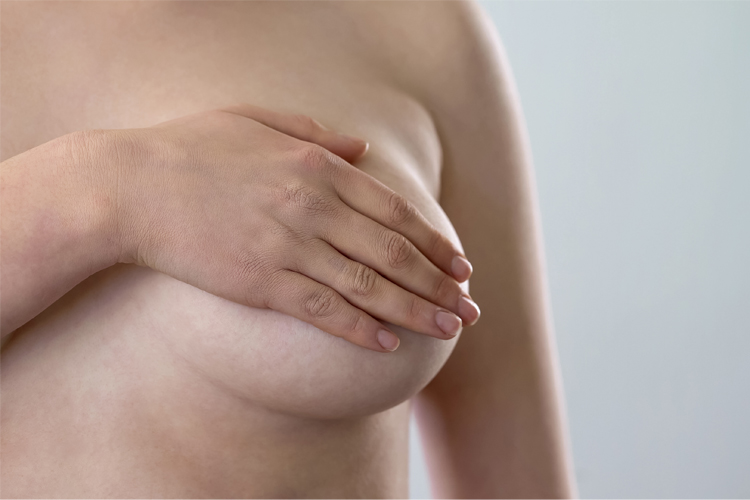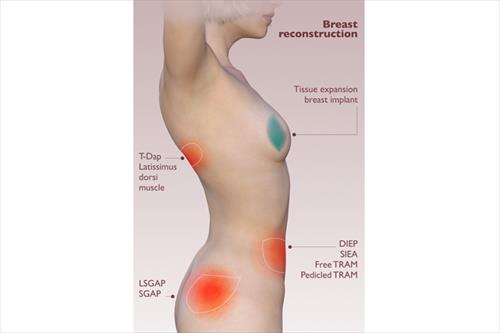For many women diagnosed with breast cancer, mastectomy (or breast removal) is regrettably a necessary part of cancer treatment. Fortunately, women who have undergone this surgery can choose to have their breasts reconstructed. This procedure restores the size and shape of the patient's natural breasts and can help renew her sense of beauty and femininity. Dr Athanasios Antoniadis uses two breast reconstruction methods for her patients, the tissue expansion procedure and the TRAM flap procedure.
Tissue Expansion and Permanent Implants
The tissue expansion method involves stretching the remaining skin and muscle on the chest wall followed by the placement of a permanent breast implant that is filled with saline. The tissue expander placement surgery can be performed at the same time as the mastectomy or in a delayed fashion, even years after the cancer surgery.
To begin this breast reconstruction procedure, Dr. Antoniadis will make an incision in the mastectomy scar and insert a tissue expander under the chest muscle. The incision will then be stitched closed. Over a period of weeks, Dr. Antoniadis will inject saline solution into the expander through a tiny valve that lies just below the skin's surface. Once the skin and muscle have stretched sufficiently, she will remove the expander and replace it with a permanent implant, similar to those used in breast augmentation procedures. A final operation will then be required for the reconstruction of the nipple and areola (the dark skin surrounding the nipple).
TRAM Flap Procedures
Tissue-flap methods use the body's own tissue to create a breast mound. The transverse rectus abdominus myocutaneous (TRAM) flap is the most commonly used flap for breast reconstruction. The surgery involves the use of the tissue and one of the muscles from the abdominal wall along with the associated skin and subcutaneous fat. The tissue is moved from the abdomen to the chest to create a breast mound. At a later time, the nipple-areola complex can be created. The abdominal wound is stitched back together, which results in the added benefit of a tummy tuck for the patient. There are several different tissue-flap methods available, each one using tissue from a different area on the body to create the breast, but the TRAM flap is the best one for most patients.
After Breast Reconstruction Surgery
After breast reconstruction surgery, patients may experience some fatigue and soreness. Postoperative side effects such as bruising, swelling, and discomfort can typically be reduced through medication. Patients can expect to return home one to three days after the placement of a tissue expander, and they can usually return home four to five days after the TRAM flap procedure.














 Login
Login Forgotten password
Forgotten password